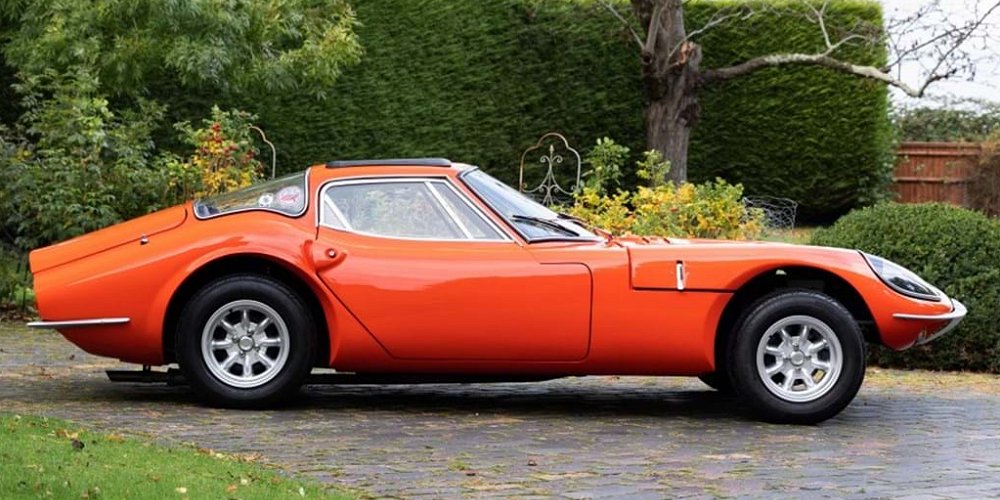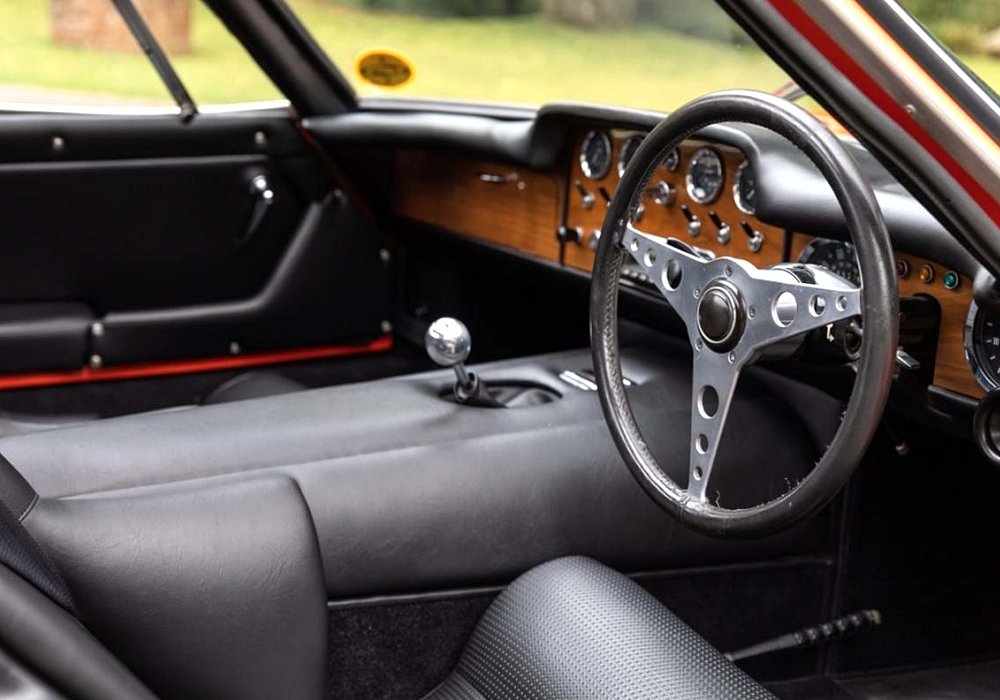Description
The Marcos 1600 GT was introduced in the late 1960s as the smaller-capacity companion to the larger 1800 and 3-litre Marcos GT models. Designed to deliver the same trademark Marcos qualities — lightness, agility and a distinctive, aerodynamic silhouette — but with a more accessible engine and lower running costs, the 1600 GT became one of the company’s most appealing entry-level sports cars. It preserved everything that defined the early Marcos approach: an ultra-light chassis, a sleek fibreglass body, and a driving experience centred on feedback and involvement rather than outright power.
The 1600 GT retained the signature Marcos styling created by Frank Costin. Its long, low nose, set-back cockpit and sharply tapered tail gave it a dramatic, almost competition-car profile. The compact dimensions and low frontal area made it particularly slippery through the air, contributing to strong performance even with modest power. The body was moulded entirely from glassfibre for strength and minimal weight, and beneath it sat Marcos’s famous laminated plywood monocoque — a construction method unique to the company.
This plywood chassis, bonded from high-grade marine laminates, was extraordinarily light and offered impressive torsional rigidity. Despite its unconventional nature, it proved durable and highly effective, providing a solid foundation for precise suspension geometry and sharp handling. The rigidity of the monocoque was central to the 1600 GT’s character: the car felt tight, responsive and communicative in a way few small sports cars of the period could match.
Power came from the Ford Kent 1.6-litre four-cylinder engine, most commonly the 1600 crossflow unit as used in the Ford Cortina GT. In standard road tune it produced around 85 horsepower, but thanks to the car’s kerb weight of just over 700 kg, performance was lively. The engine’s willingness to rev, its strong mid-range torque and the ease with which it could be tuned made it well suited to Marcos’s lightweight philosophy. With twin carburettors or period modifications common among owners, power outputs of 100 horsepower or more were easily achieved, giving the 1600 GT brisk acceleration and a top speed around 110–115 mph.
Suspension was simple but carefully developed. Independent front suspension with wishbones and coil springs gave sharp turn-in and good road grip, while the live rear axle, well damped and controlled, provided traction and predictability. Front disc brakes and rear drums offered dependable stopping power, and the car’s low weight ensured brake fade was rarely an issue. The steering was light and direct, delivering the kind of immediacy that defined so many small British sports cars of the era.
Inside, the 1600 GT offered the same minimalist, characterful cabin found in other early Marcos models. The driving position was extremely low, almost reclined, placing the driver close to the road and enhancing the sense of speed. The slim dashboard, typically finished in wood veneer, carried a concise set of Smiths instruments, and the overall feel was one of purposeful simplicity. It was not a car built for comfort or luggage capacity, but rather for pure, unfiltered driving enjoyment.
On the road, the Marcos 1600 GT quickly earned praise for its handling balance and liveliness. The stiff monocoque and low mass made the car feel agile and confidence-inspiring, enjoyable on twisting country lanes and surprisingly composed at higher speeds. Its strong aerodynamics and low centre of gravity gave it stability beyond what its modest power might suggest. The car rewarded smooth, precise inputs, making it a favourite among drivers who valued finesse and engagement over brute force.
The 1600 GT also found a niche in club motorsport. Its lightweight construction made it ideal for hill climbs, sprints and smaller circuit events. Tuned examples could comfortably challenge more powerful competitors thanks to their handling precision and effective use of limited power.
As with all Marcos models of the period, production numbers were low, contributing to the 1600 GT’s rarity today. It sits in an appealing middle ground within the Marcos range — lighter and more accessible than the Volvo-powered cars, yet offering more spirit and tuning potential than the smallest engine variants.
Today, the Marcos 1600 GT is appreciated as one of the purest expressions of the company’s unique engineering vision. It combines lightweight design, distinctive aesthetics and an involving driving experience in a way few period sports cars can match. With its mix of practicality, tunability and charm, it remains an excellent entry point into the world of quirky, characterful British specialist sports cars.





